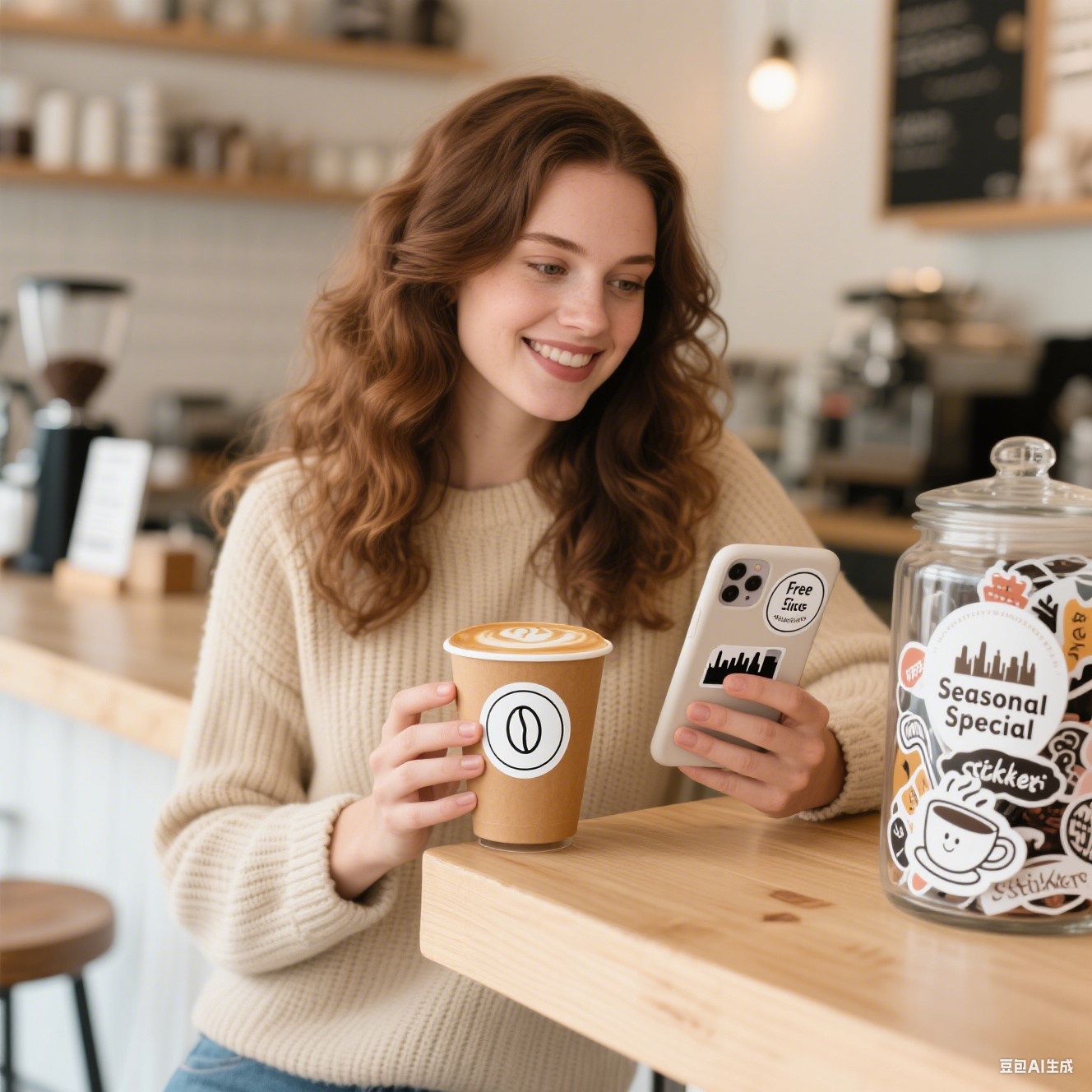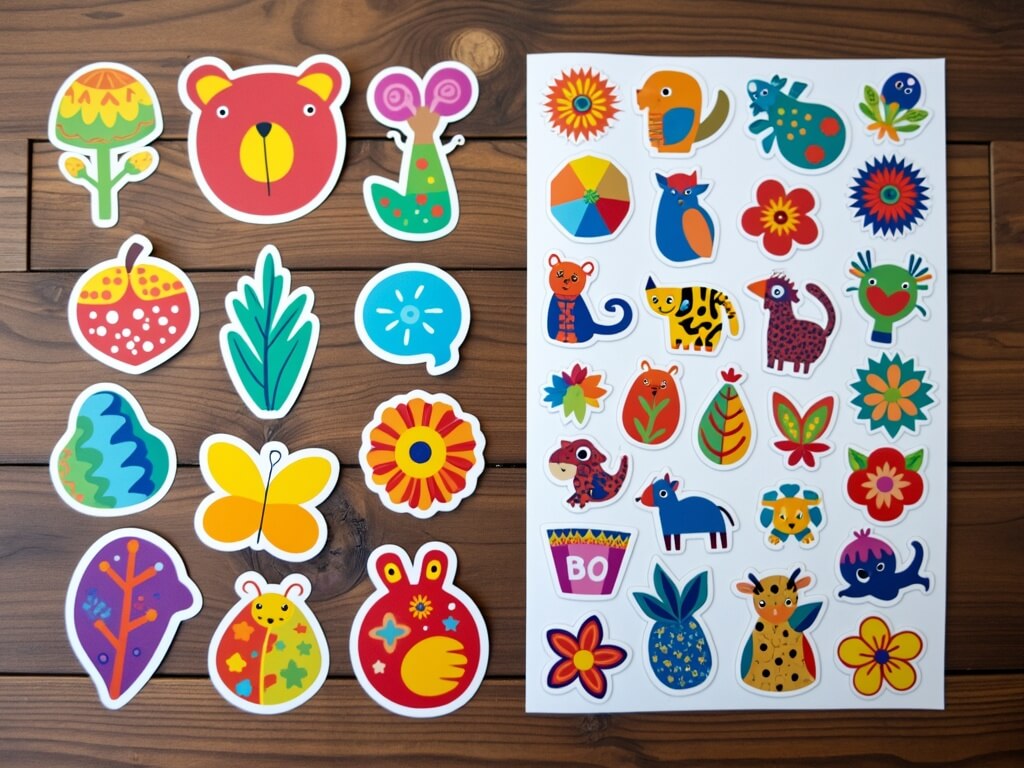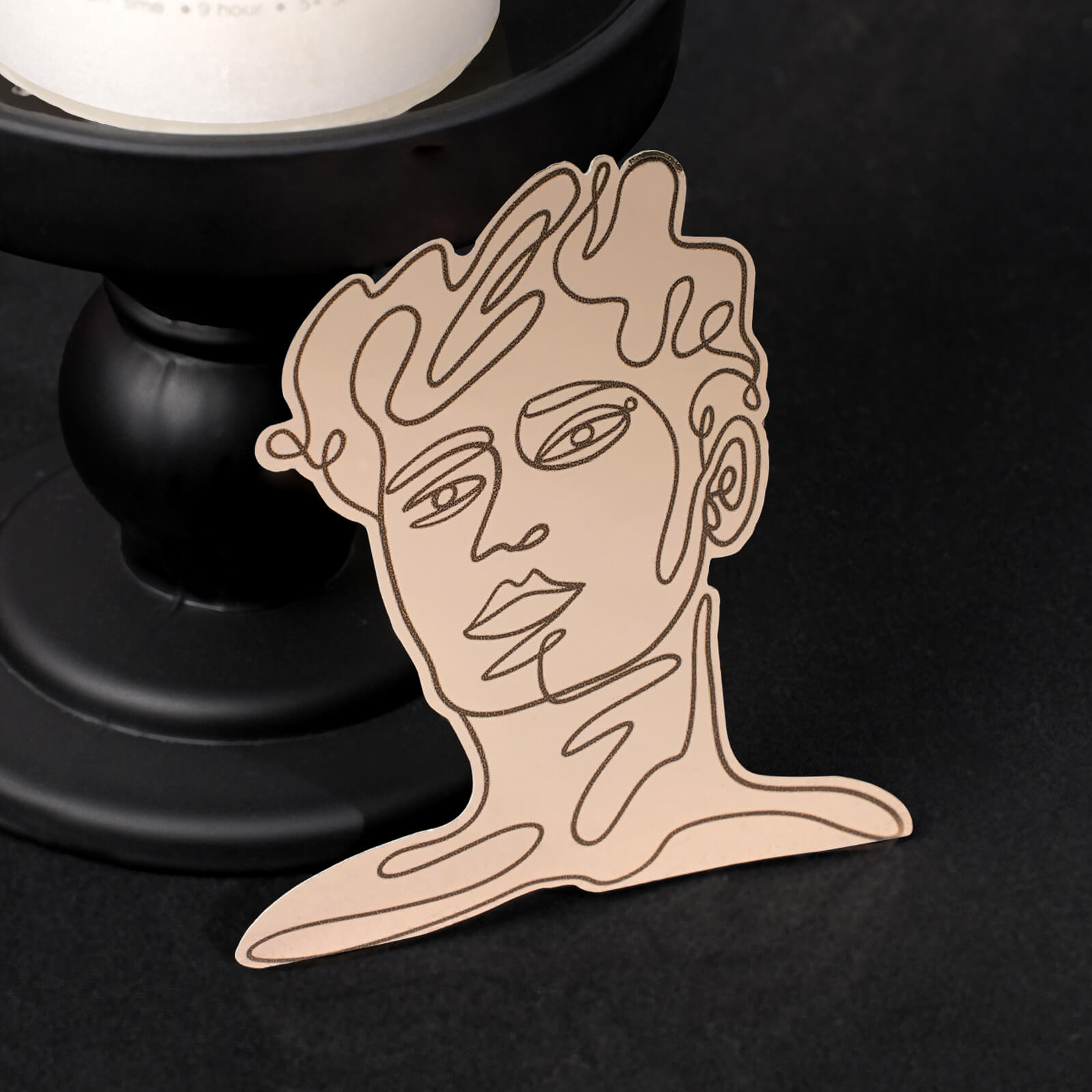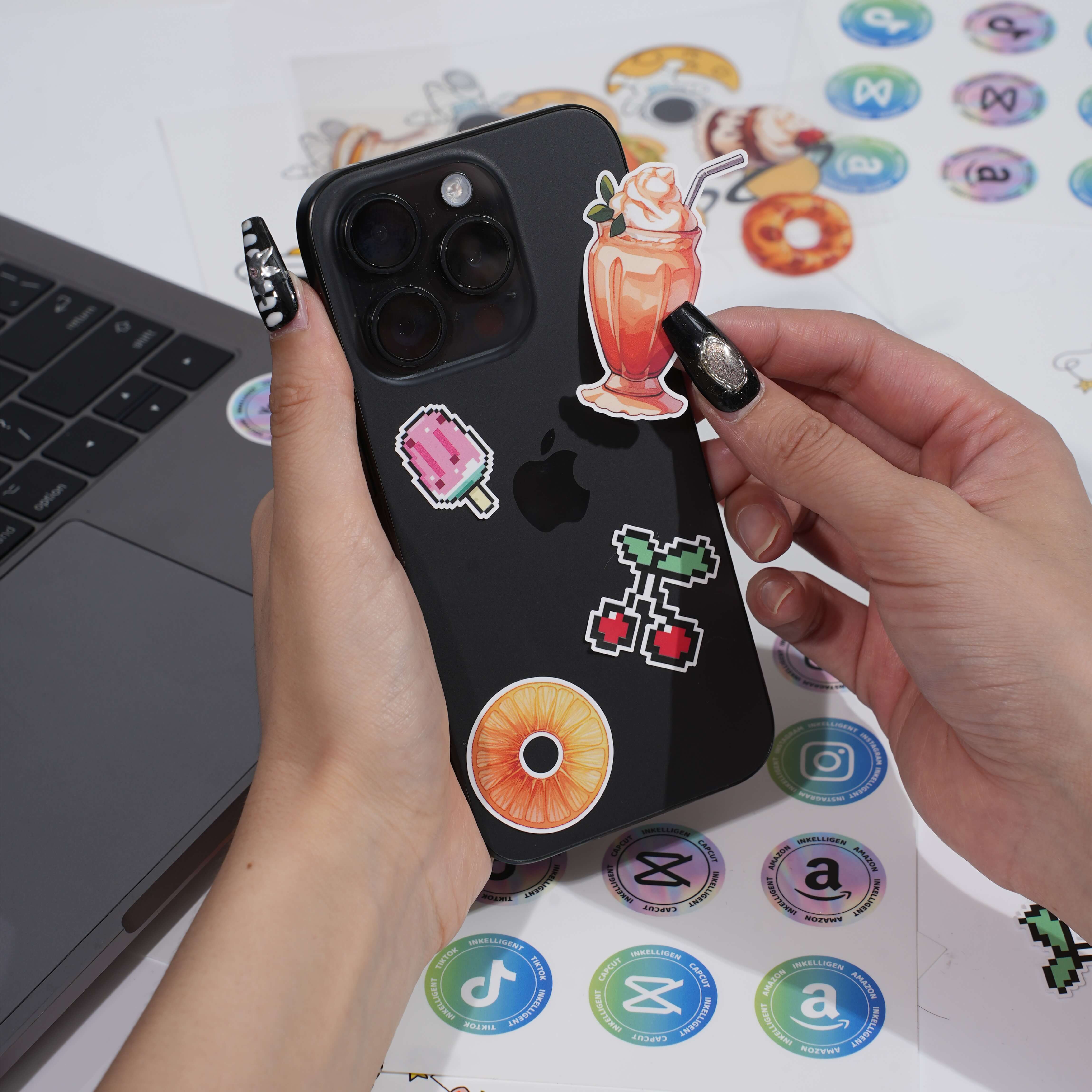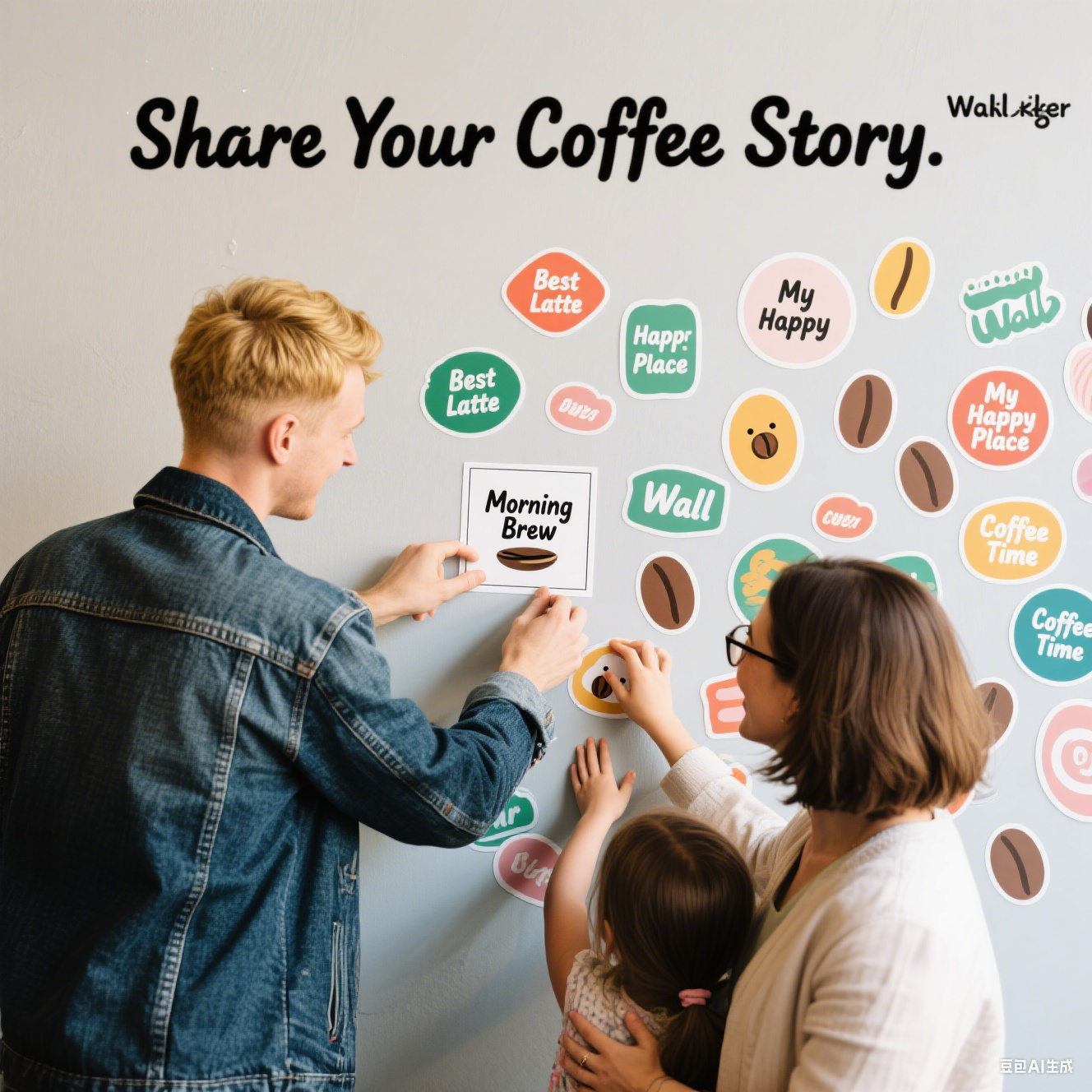
In the corner of a coffee shop, you can often see those small and exquisite stickers. They may seem insignificant, but there are many secrets hidden between customers' preferences and brand management.
What are the needs and preferences of customers who come to coffee shops for stickers?
In what scenarios do customers prefer to get coffee shop stickers?
There are various scenarios for customers to get coffee shop stickers. Many customers hope to receive stickers as a small surprise after spending a certain amount of money; some customers look forward to getting limited-edition stickers related to the events when participating in theme activities held by the coffee shop.
What are the differentiated demands of different customer groups for the patterns and materials of coffee shop stickers?
Different customer groups have obvious differentiated demands for the patterns and materials of coffee shop stickers. Young people usually prefer trendy and personalized patterns, such as anime images and fashion elements, and tend to choose glossy and textured materials; for families with children, kids prefer colorful cartoon patterns, and the materials are required to be safe, non-toxic and not easy to break; business professionals may prefer simple and elegant patterns, with wear-resistant and exquisite materials.
On which items do customers prefer to stick coffee shop stickers? How does this affect the size design of stickers?
Customers stick coffee shop stickers on a wide range of items, commonly including phone cases, notebooks, water cups, backpacks, etc. This puts forward requirements for the size design of stickers. Stickers on phone cases should not be too large, usually 3-5 centimeters is appropriate; while stickers on notebooks or backpacks can be larger, with a size of 6-10 centimeters to better display the pattern.
Will customers specially go to the store to consume because they "like a certain sticker"? How strong is this "sticker-driven consumption" willingness?
Indeed, some customers will specifically go to the store to consume because they like a certain coffee shop sticker. Especially some uniquely designed, collectible limited-edition or co-branded stickers can attract many sticker lovers to make a special trip. The willingness of this "sticker-driven consumption" varies depending on the attractiveness of the sticker and the customers' preference. For loyal sticker lovers, the willingness is often strong.
How can the sticker design of coffee shops be adapted to the brand?
What brand elements need to be integrated into the sticker design of coffee shops to make customers quickly associate with the brand?
The sticker design of coffee shops should integrate the core elements of the brand so that customers can quickly associate with the brand. For example, the brand's logo is essential, which should be cleverly integrated into the sticker pattern; in addition, the brand's unique color tone should be consistent with the overall visual style of the brand; moreover, the brand's unique patterns or symbols can also enhance customers' recognition of the brand.
Between simple style and scene-based style stickers, which one can better enhance customers' memory of the coffee shop?
The effect of simple style and scene-based style stickers on enhancing customers' memory varies depending on the brand positioning of the coffee shop. For coffee shops taking a simple and fashionable route, simple style stickers are often more in line with the brand image, allowing customers to remember the brand through the concise design; while for coffee shops focusing on creating a specific scene atmosphere, such as a warm and literary scene, scene-based style stickers can better convey the brand characteristics and deepen customers' memory.
For stickers designed for "seasonal limited-edition drinks", do they need to be consistent with the drink packaging and store decoration style? How to balance "sense of limitation" and "brand recognition"?
Stickers designed for "seasonal limited-edition drinks" need to be consistent with the drink packaging and store decoration style to form a unified visual experience and enhance customers' sense of involvement. In terms of balancing "sense of limitation" and "brand recognition", core brand elements such as logos and color tones can be integrated into the sticker design, while highlighting seasonal features, such as using seasonal flowers, fruits and other elements, so that customers can not only feel the uniqueness of the limited edition but also quickly recognize the brand.
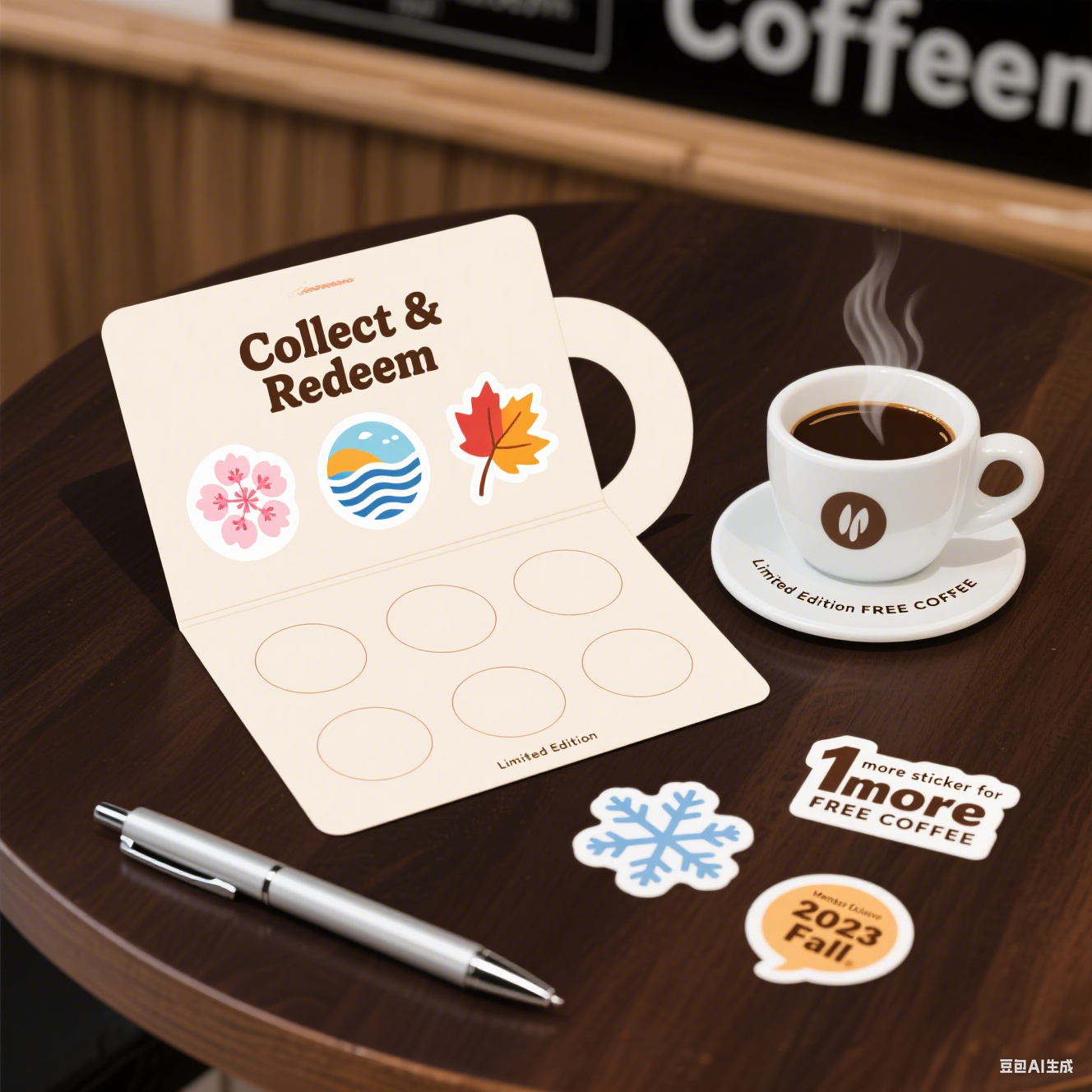
How to operate a coffee shop through stickers and what can be done with stickers?
When setting up a "sticker wall" in a coffee shop, how to guide customers to actively participate in pasting to avoid the wall being messy or unattended?
When setting up a "sticker wall" in a coffee shop, some strategies can be adopted to guide customers to actively participate in pasting and avoid the wall being messy or unattended. For example, set a theme for the sticker wall, such as "My Coffee Story", and let customers paste relevant stickers according to the theme; provide various styles and sizes of stickers to meet the needs of different customers; regularly hold sticker creation activities to encourage customers to draw their own stickers and paste them on the wall, and display and reward excellent sticker works.
When using the strategy of "collecting stickers for rewards", how to set the difficulty of obtaining stickers to promote repurchases without reducing the experience?
When using the strategy of "collecting stickers for rewards", the difficulty of obtaining stickers is crucial. If the difficulty is too high, customers will feel it is out of reach, thus reducing their enthusiasm for participation; if it is too low, it will be difficult to promote repurchases. It can be set according to customers' consumption amount and frequency. For example, customers can get a sticker when they spend a certain amount, and accumulate a certain number of stickers to exchange for corresponding rewards, allowing customers to accumulate gradually during consumption, which not only makes them feel a sense of achievement but also stimulates their desire to consume again.
When issuing "level-exclusive stickers" to members, is it necessary to endow them with additional functions or is it more effective to only use them as identity symbols?
Whether to endow "level-exclusive stickers" with additional functions when issuing them to members depends on the coffee shop's membership system. If the membership system is relatively complete and there are significant differences in rights and interests between different levels of members, endowing level-exclusive stickers with additional functions, such as redeeming specific products and enjoying exclusive discounts, can better encourage members to upgrade; if the membership system is relatively simple, only using them as identity symbols can also make members feel their particularity and sense of honor.
For family customers with children, do children's exclusive stickers need to be matched with "parent-child interaction games"?
For family customers with children, matching children's exclusive stickers with "parent-child interaction games" can significantly enhance attractiveness. For example, parent-child sticker puzzle games can be designed, allowing parents and children to complete the puzzle with stickers together; or hold parent-child sticker creation competitions, letting children create works with stickers with the help of parents, and the winners can get rewards. This can not only increase children's love for stickers but also enhance parent-child relationships and improve the satisfaction of family customers.
Effect Evaluation and Optimization Category
How to count the "communication effect" of coffee shop stickers?
The "communication effect" of coffee shop stickers can be counted from both online and offline aspects. Online, pay attention to the number of contents, likes, and comments shared by customers on social media with coffee shop stickers; offline, through questionnaires, understand whether customers know about the coffee shop's stickers and whether they have seen or heard of them from others.
If customers feedback that "stickers are useless and take up space", what may be the reasons?
There may be various reasons why customers feedback that "stickers are useless and take up space". Firstly, the design of the stickers does not meet customers' aesthetics and needs, making customers feel that they have no collection or use value; secondly, the practicality of the stickers is not strong, and customers cannot find a suitable place to paste them; thirdly, the distribution method is unreasonable, such as forcing to give them when customers have no demand, making customers feel it is a burden.
Comparing "free stickers" and "paying to buy sticker blind boxes", which mode is more beneficial to the coffee shop's revenue and brand communication?
Both "free stickers" and "paying to buy sticker blind boxes" have their own advantages. "Free stickers" can reduce the threshold for customers to participate, attract more customers to pay attention to and obtain stickers, thereby increasing the brand's exposure and contributing to brand communication; "paying to buy sticker blind boxes" can bring additional revenue to the coffee shop, and the sense of mystery and collectibility of blind boxes can attract some loyal customers and promote their multiple consumption.
What is the most appropriate launch cycle for holiday-limited stickers? How to avoid inventory backlog?
The launch cycle of holiday-limited stickers is usually 1-2 weeks, which can give customers enough time to obtain and experience them, while maintaining the holiday atmosphere and the scarcity of stickers. To avoid inventory backlog, coffee shops can refer to the sales data of similar holiday stickers in the past, combined with the popularity and publicity efforts of the current year's holiday, reasonably estimate the purchase quantity, and at the same time, adopt the method of buy-one-get-one-free or discount to deal with the remaining inventory in the later stage of the activity.
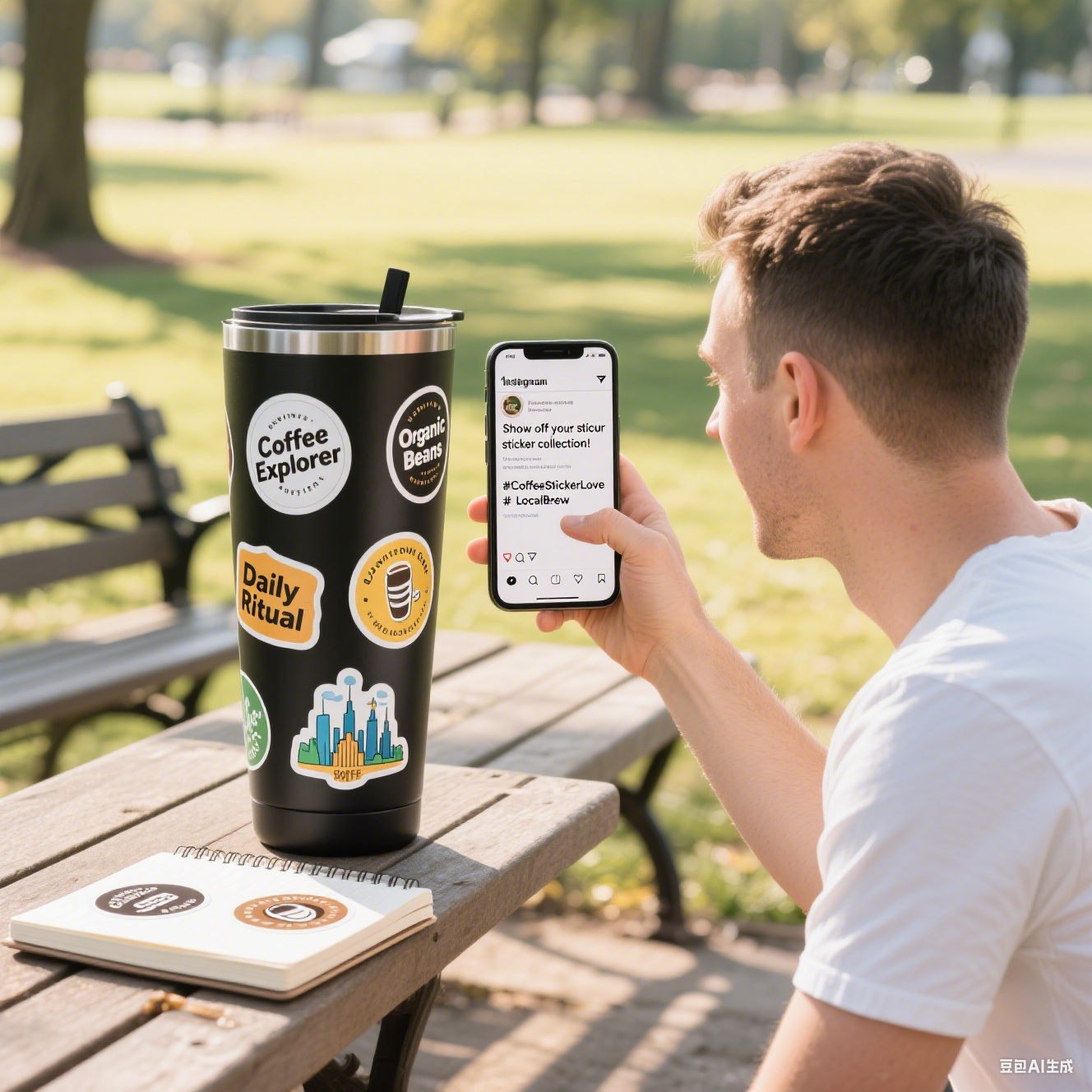
Interaction and Communication Category
When a coffee shop launches a "posting stickers to win free orders" activity, how to design the rules to improve customers' participation enthusiasm and content communication?
When a coffee shop launches a "posting stickers to win free orders" activity, the rules should be designed to improve customers' participation enthusiasm and content communication. The rules should be simple and clear. For example, customers only need to take a photo of items with coffee shop stickers and post them on social media with designated topic tags to participate in the lottery. The rewards should be attractive. In addition to free orders, coffee coupons and peripheral products can also be set. At the same time, encourage customers to invite friends to like or forward to increase the communication range of the content.
Letting customers decorate "their own cups" with coffee shop stickers and take photos to share, what incentives need to be matched with this method to continuously attract participation?
To continuously attract customers to participate in decorating "their own cups" with coffee shop stickers and taking photos to share, corresponding incentive measures need to be matched. For example, customers can get a certain consumption discount coupon after each sharing, and accumulate a certain number of shares to exchange for free coffee or coffee shop peripheral gifts; excellent decorated works can also be selected regularly, and the winners can be given rich rewards, such as quarterly free coffee cards.
Can co-designing stickers with local illustrators enhance the "local identity" and topic of the coffee shop? What is the customers' acceptance of such co-branded stickers?
Co-designing stickers with local illustrators can integrate local culture, scenery and other elements into the sticker design, thereby enhancing the "local identity" of the coffee shop. At the same time, the co-branding itself can create topics and attract more customers' attention. From market feedback, customers have a high acceptance of such co-branded stickers with local characteristics and artistic sense. Many customers will actively obtain and collect them because they like the illustrator's style or local elements.
